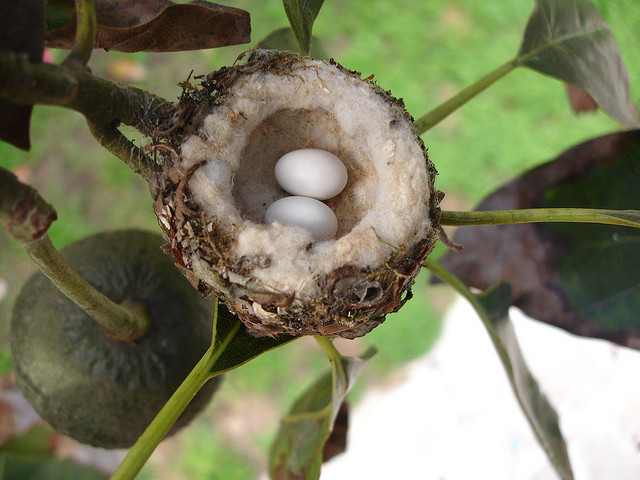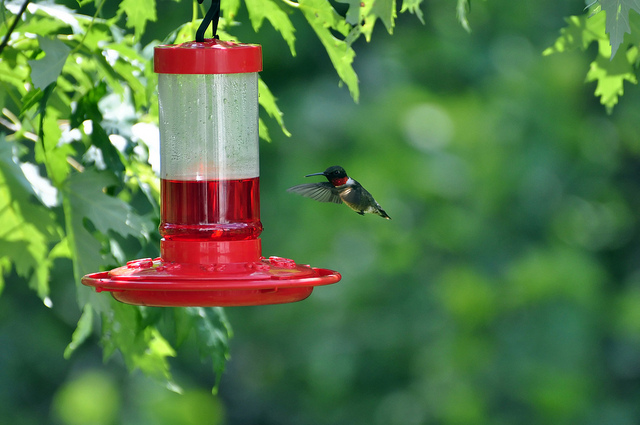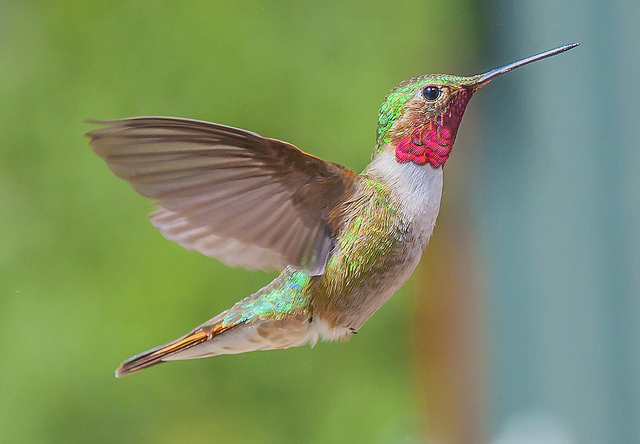Learn how easy it is to welcome enchanting little hummingbirds into your yard. Plant hummingbird gardens and set out their favorite nectar to make your house a hummingbird destination.
What appears like a thought and disappears like a prism in a dream?
Witnessing fleeting little hummingbirds is a lingering privilege, like memories of a childhood story that you warm to every time you think of it. Hummingbirds fly into our gaze as memories before they get a chance to happen.
These tiny icons are facing trials – habitat loss is the major issue for hummingbirds and it is their most critical need as they travel from North America (even into Alaska) to Mexico and South America.
Hummingbirds are only found in the Americas!
This tremendous journey is carried out by these birds… and they burn lots of energy. Their migrations are dictated by the cyclical waves of flowering plants
When we think about attracting species into our areas, we need to step back and consider the project on a wider platform. There is a symbiotic relationship between flora and fauna and attracting some species of any automatically benefits others. Take a walk through the concept of ecology and your experiences as a birder will blossom.
Hanging out a feeder or setting out a birdbath may give limited results if the context of these items and what “place” they will serve for wildlife is glossed over. Handling any of these aspects ephemerally also yields poor results! Disappointment in attracting or sustaining wildlife becomes a slippery slope when all of the elements are not balanced or enhancing each other.
It is impossible to bird with “tunnel-vision.” You can’t attract one species of animal, in this case, hummers, and un-attract others.
How to attract a hummingbird without trying
This is easier than it sounds and you don’t need to burn the oil lamps reading tomes on ecosystems. Nature is resourceful, adaptable and it runs on common sense. Making a “nature” yard can be simplified into three steps:
- create resource habitat
- provide food sources
- locate these assets in a strategic manner.
Creating the Right Habitat
Hummingbirds feed on nectar. They also need protein to supplement their sweet “beak.” These birds will make appetizers out of mosquitoes that spoil your evening picnic. Hummingbirds rely on insects during their nesting season.
Build and enhance the landscaping in your yard. Provide the three “essentials” of shelter, security and water. These are the resources that all animals will be looking for – in this case, if you build it, they WILL come.
Symbiotic happenings will slowly emerge – you will notice the appearance of insects on your butterfly bush – sphinx moths (the hummingbird impersonators), night moths, butterflies, honeybees and so many others. These creatures will pollinate flowers ensuring fruits and seeds for you and for other visiting birds. The insects will attract bird species that eat them, the seed-heads will bring chickadees and finches and the leaves and brush will make everybody a great pit stop and roosting place.
The Smithsonian informs us that in “northern and high-elevation areas, hummingbirds depend upon sap-wells of woodpeckers known as sapsuckers. The woodpeckers are able to keep the sugary sap of trees flowing and the hummers sneak in and take advantage of the woodpeckers’ work.”
 Water is the most overlooked and the most central NEED in any ecosystem.
Water is the most overlooked and the most central NEED in any ecosystem.
Provide fountains and birdbaths for your hummingbirds. While hummers receive their water from droplets, dew and from their nectar meals, they require water for bathing. They really enjoy sprays of water. If you are watering the garden or the lawn, you will notice these guys buzzing in the spray like frolicking kids.
If you can set the sprinkler near perch areas – even just a moveable makeshift pole – the hummers will alight and preen in the mists. Set the charming bird swing near the sprinkler and watch the hummingbirds frolic in the spray
Naturalist, Julie Zickefoose attests to the hummers’ great love for misters. She suggests purchasing a mist attachment to your garden hose and wait for the little birds to buzz towards it. It really is a delight to watch!
Water gardens are a wonderful addition. They don’t have to be huge ponds, a simply tub with water plants and a fountain will do the trick! Hummingbirds prefer nesting over water as well.
What to plant for Hummingbirds
Plants bloom in waves.
Be sure to cultivate varieties that will flower in sequence from spring to fall. Set your hummingbird feeder in the stands of plantings. Mix species – provide favorite flowers (those that are red or orange, have good nectar production and tube shaped blossoms). Red flowers catch their eyes, but hummers will beeline to any clusters of blooms. The more flowering plants you can set out the better! Try one or all of these:
- Butterfly bush
- Hosta
- Phlox
- Honeysuckle and trumpet vines
- Monarda, columbine, lobelia, agastache
When we think of constructing a horticultural display for wild birds we tend to focus on fruiting and blooming plants only. But if you want to attract wildlife and keep your hummingbirds as happy tenants – don’t forget to provide nesting and “hang out” spots.
Hummingbirds have the same requirements as other species and they will be looking for a quiet and secluded area to build their minuscule nests. These mystical structures are usually sited over water or open spots, like bough covered paths or overhangs of branches. The magical nests are fashioned using spider webs, mosses and lichens. These ornate homes would certainly nestle into a tale from a Victorian fairy legend! If you have ever witnessed the eggs of these creatures tucked into their wispy nest – you’d swear the sprites were at work in your garden.
Thoughts on Feeders
 There are many products to choose from! Hummingbird feeders come in a wide-variety of styles and designs to fit your décor and needs. Purchase good quality nectar or nectar mixes and be sure to wash feeders frequently. Never feed old or spoiled nectar and monitor feeders, their reservoir and their ports, for any mold or muck.
There are many products to choose from! Hummingbird feeders come in a wide-variety of styles and designs to fit your décor and needs. Purchase good quality nectar or nectar mixes and be sure to wash feeders frequently. Never feed old or spoiled nectar and monitor feeders, their reservoir and their ports, for any mold or muck.
Many feeders come with bee and ant deflectors. Some even come pre-filled with nectar. The nectar is manufactured in powder, liquid concentrate and ready-to-use liquid formulations.
Hummingbirds will visit feeders from the spring through the fall – so keep the diner open. Have several feeding stations to prevent squabbling and to help in attracting more of these birds.
Be sure to place the containers in area where they will be noticed by these “sight” feeders. Hummingbirds scan areas for stands of blossoms – particularly in the red color spectrum – so don’t hide the nectar stations. You can also set out wind whirly-gigs and ribbons – they will help to signal the birds in. To learn more about feeding hummingbirds visit the Penn State extension.
Choose a feeder that pleases your eye – but you will want to ensure that the style is easy for you to clean. Hummingbird nectar, being a sugar, spoils quickly. Feeders need to be full and they need to be emptied and cleaned every 3-4 days!.
Feeder Styles:
Saucer-shaped reservoir with perches
Bottle reservoir (glass or plastic) with “poultry feeder” base
Novelty designed window feeders
Wand designed “test-tube” feeder that can be hung, set around flowers, or affixed to branches
Before setting out feeders be sure to set them high enough to prevent cats from using them as bait! Wild birds are at great risk from pet and feral cats. Feeding stations are extremely attractive to cats and the birds are at risk when they are resting nearby or alighting to feed. (Read more about these cute little birds, including how to help injured hummers.)
Nothing is quite as rewarding as being a big friend to these tiny feathered jewels. Hummingbirds are incredibly friendly, and it is a true wonder to hear them hummm and whizz close by as they press you into filling those feeders a little bit faster!
After all, they do live life in the fast lane.


